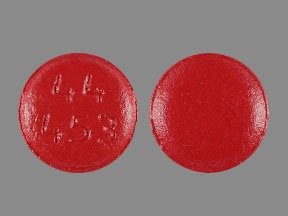
Contents
Phenylephrine
Phenylephrine is administered intravenously to increase blood pressure after anesthesia. It works by constricting blood vessels.
Phenylephrine belongs to a class of medications known as alpha1 agonists and works by stimulating alpha1 adrenergic receptors. These receptors are located in smooth muscles including blood vessels, heart muscle, and bladder neck. Stimulation of these receptors causes contraction of smooth muscles, resulting in increased vascular resistance and blood pressure.
Warnings
- Phenylephrine can precipitate chest pain in patients with narrowed arteries, worsen congestive heart failure, and increase pulmonary arterial pressure. Use with caution.
- Phenylephrine can slow heart rate and reduce cardiac output. Use with caution in patients with preexisting bradycardia, heart block, myocardial disease, or severe coronary artery disease.
- Avoid phenylephrine or use it with extreme caution in patients with heart failure or cardiogenic shock. Monitor blood pressure.
- Phenylephrine can cause excessive vasoconstriction and impair blood flow to vital organs. Use with caution in patients with extensive peripheral vascular disease.
- Phenylephrine can increase the need for renal replacement therapy in patients with septic shock. Monitor kidney function.
- Patients with spinal cord injury or autonomous nervous system dysfunction may have an exaggerated increase in blood pressure. Monitor closely.
- Drugs that stimulate uterine activity can potentiate the blood pressure-raising effect of phenylephrine and increase the risk for hemorrhagic stroke.
- Some formulations contain sodium metabisulfite that may cause allergic reactions, including severe reactions and asthmatic episodes in certain individuals. Use with extra caution in patients with asthma.
- Avoid extravasation of the drug from the vein during IV administration.
What are the side effects of phenylephrine?
Common side effects of phenylephrine include:
- Headache
- Nausea
- Vomiting
- Gastric pain and irritation
- High blood pressure
- Hypertensive crisis
- Reflex reduction in heart rate
- Reduced cardiac output
- Reduced blood flow to tissues
- Irregular heart rhythm
- Rebound congestion
- Decreased kidney perfusion
- Reduced urine output
- Fluid in lungs
- Shortness of breath
- High acidity of body fluids
- Anxiety
- Sneezing
- Burning
- Itching
- Neck pain
- Blurred vision
- Tremors
- Leakage of drug into surrounding tissue
Call your doctor immediately if you experience any of the following symptoms or serious side effects while using this drug:
- Serious heart symptoms include fast or pounding heartbeats, fluttering in your chest, shortness of breath, and sudden dizziness;
- Severe headache, confusion, slurred speech, severe weakness, vomiting, loss of coordination, feeling unsteady;
- Severe nervous system reaction with very stiff muscles, high fever, sweating, confusion, fast or uneven heartbeats, tremors, and feeling like you might pass out; or
- Serious eye symptoms include blurred vision, tunnel vision, eye pain or swelling, or seeing halos around lights.
This is not a complete list of all side effects or adverse reactions that may occur from the use of this drug. Call your doctor for medical advice about serious side effects or adverse reactions. You may also report side effects or health problems to the FDA at 1-800-FDA-1088.
What are the dosages of phenylephrine?
Injectable IV Solution (Ready-to-use)
- 0.1 mg/mL (Biorphen)
- Do not dilute further
Injectable IV Solution (Concentrated)
- 10 mg/mL (Vazculep, Biorphen)
- Requires further dilution
Adult:
- IV bolus: 40-100 mcg every 1-2 minutes as needed, not to exceed total dose of 200 mcg
- Adjust dosage according to blood pressure goal
- Continuous IV infusion: If blood pressure is below the target goal, start a continuous IV infusion with an infusion rate of 10-35 mcg/minute; not to exceed 200 mcg/min
Dosage Modifications
- Mild-to-moderate: Consider starting at the lower end of the recommended dose range, and adjusting dose based on the target blood pressure goal
- End-stage renal disease (ESRD): Dose-response data indicate increased responsiveness to phenylephrine
- Start dosing in the recommended dose range, but more phenylephrine may be needed in this population
- Moderate-to-severe (Child-Pugh Class B or C): Dose-response data indicate decreased responsiveness to phenylephrine
Dosing considerations
- Drug not recommended by The Society of Critical Care Medicine, to treat septic shock, except when first line agent epinephrine associated with causing serious arrhythmia, when cardiac output is high and blood pressure persistently low, or when combination of inotrope/vasopressor and low dose vasopressin failed to achieve desired mean arterial pressure and phenylephrine used as salvage therapy
Pediatric:
Severe Hypotension/Shock (Off-label)
Children below 2 years
- Safety and efficacy not established
Children 2 years and above
- 5-20 mcg/kg IV once; THEN 0.1-0.5 mcg/kg/min IV; not to exceed 3-5 mcg/kg/min IV
Overdose
- Phenylephrine overdose can rapidly increase blood pressure causing symptoms that include headache, vomiting, high blood pressure, reflex drop in heart rate, a sensation of fullness in the head, tingling of the extremities, and irregular heart rhythms including ventricular extra beats and ventricular rapid beat.
- There is no antidote for intravenous phenylephrine. Treatment includes discontinuation of the drug, medications to reduce pressure and heart rate, and supportive care.
What drugs interact with phenylephrine?
Inform your doctor of all medications you are currently taking, who can advise you on any possible drug interactions. Never begin taking, suddenly discontinue, or change the dosage of any medication without your doctor’s recommendation.
- Severe interactions of phenylephrine include: iobenguane I 123, isocarboxazid, linezolid, phenelzine, procarbazine, selegiline transdermal, and tranylcypromine.
- Other potential interactions include: alfuzosin, asenapine, desmopressin, doxazosin, eucalyptus, moxisylyte, phenoxybenzamine, phentolamine, prazosin, sage, silodosin, and terazosin.
It is important to always tell your doctor, pharmacist, or health care provider of all medications you use, as well as the dosage for each, and keep a list of the information. Check with your doctor or health care provider if you have any questions about the medication.
Pregnancy and breastfeeding
- Data from clinical trials and analyses have not established a drug-associated risk of major birth defects and miscarriage.
- There are no data on use in first and second trimesters, and animal reproductive studies show evidence of fetal malformations.
- Untreated hypotension associated with spinal anesthesia for Cesarean section can increase nausea and vomiting. Reduced blood flow to the uterus due to maternal hypotension can slow the fetal heart rate and cause fetal acidosis.
- Use with caution during pregnancy if potential benefits to the mother justify potential risks to the fetus.
- It is not known if phenylephrine is excreted in breast milk. Use during breastfeeding should be based on the mother’s clinical need, benefits of breastfeeding to the infant, and potential risk to the infant from drug exposure or underlying maternal condition.
By clicking "Submit," I agree to the MedicineNet Terms and Conditions and Privacy Policy. I also agree to receive emails from MedicineNet and I understand that I may opt out of MedicineNet subscriptions at any time.
Summary
Phenylephrine is a medication used in clinical settings for the treatment of low blood pressure resulting primarily from blood vessel dilation during anesthesia. Common side effects include headache, nausea, vomiting, gastric pain and irritation, high blood pressure, reflex reduction in heart rate, reduced cardiac output, reduced blood flow to tissues, irregular heart rhythm, rebound congestion, decreased kidney perfusion, reduced urine output, fluid in lungs, shortness of breath, and others.


